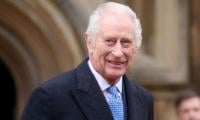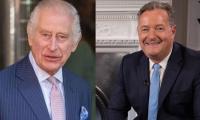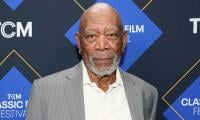ISLAMABAD: The Najafi inquiry report into the Model Town killing does not name anyone particular but blame all “concerned” without any exception for abetting the crime which took at least 10 lives besides injuring many others.
“The police and all other concerned, without any exception, abetted being desperado, performed daredevil acts, which resulted into irreparable loss,” the report said, leaving it to the reader of the report “fix the responsibility” of the unfortunate incident.
Although, the report does not reveal precisely as to who had ordered the police to open fire on the Pakistan Awami Tehreek workers, yet it concludes on the basis of what it called “irrefutable suggestive” situation, “The police did exactly for which they were sent and gathered over there.”
The report said, “The actions of police of firing and severely beating the police on the crime scene is irrefutably suggestive that the police did exactly for which they were sent and gathered over there.”
The report said, “The facts and circumstances of the bloodbath clearly show that the police officers actively participated in the massacre. The apathy and recklessness of all authorities in Punjab in the matter under hand, created the genuine doubt about their innocence.”
The report said that in a meeting, held on June 16, 2014, chaired by Rana Sanaullah and attended by the chief secretary Punjab and other senior officials discussed Dr Tahirul Qadri’s plan of holding a long march from Rawalpindi to Lahore. The report said that Rana Sanaullah was determined not to allow the march.
In the same meeting, according to the report, the commissioner Lahore submitted a report about illegalities in placing the barriers and its erection on the roads, which were considered and treated as encroachments around Idara Minhaj-ul-Quran.
“The chair (Rana Sanaullah) decided to remove them with immediate effect. Dr Tauqeer Shah (Secretary to Chief Minister) also consented on behalf of the chief minister, Punjab, for the removal of the barriers.”
The report quoted the DCO Lahore as having said that when the TMA staff reached the spot in the middle of the night of 16th June for removing the encroachments, the furious mob and sympathizers mainly young men commenced pelting stones on police. The police acted in retaliation, leaving many persons injured, some of whom succumbed to their injuries afterwards.
The inquiry judge, however, ruled that such a level of offensive by police by any stretch of imagination did not commensurate with the level of resistance by unarmed PAT workers.
The report though blames “all concerned” yet names none for the massacre, said regarding the evidence, “The level of cooperation in digging out the truth is that no police official from top to bottom, whether actively participated in the operation or not, did utter a single word about the person under whose command the police resorted to firing upon the PAT workers.”
The report laments, “Unfortunately all were in unison in withholding the information from the Tribunal.” In the absence of hard evidence, the inquiry judge, while referring to CrPC 1898 Section 128 which envisages that firing is to be ordered by an officer of police not below the rank of ASP/DSP, said “The Tribunal, therefore, remained conscious of the deliberate silence and concealment of facts by police officials/officers before this Tribunal, creating circumstances to think that the police had to abide by the command announced secretly (or openly) to achieve the target at the cost of even killing the unarmed but precious citizens of Pakistan. This led the tribunal to say that this motif of betrayal of law by the police aimed to bury the truth speaks volumes of their high handedness.”
The inquiry judge said that the Punjab government has not empowered the tribunal to probe the matter, which “this tribunal considers as the circumstances to circumvent the process of digging out the truth”. The report adds, “The entire gamut of facts and circumstances speak volumes that there was no good intention of the government to arrive at a definite and truthful result.”
Regarding the chief minister Punjab, the report says, “The Chief Minister Punjab in his affidavit took a specific position that on June 17th, 2014 his official engagement was started after about 9.00am when he proceeded to Governor's House to attend the oath taking ceremony of new Chief Justice of Lahore High Court.”
“According to him (CM) having seen the standoff at 9.30am on TV, he immediately contacted his Secretary, Dr. Tauqir Hussain Shah, on phone to order the police to disengage forthwith. Dr Tauqir Hussain Shah in his affidavit did mention the order of disengagement, telephonically conveyed to the law minister and home secretary, but in turn they informed that two field officers informed that the situation was likely to be normalized/controlled. Strange enough that Rana Sana Ullah did not utter a single word about “disengagement”. Likewise, the Home Secretary, Punjab did not mention in his report about the word “disengagement”.
“Such facts and circumstances are bound to draw adverse inference. The collected reports from all concerned and the affidavits submitted by the police officers in the field do not depict that any order of 'disengagement' by the Chief Minister Punjab was ever conveyed/received.”
Again here in the absence of any concrete evidence or witnesses' statement, the report concludes, “It is shocking to note that everyone has deliberately but unsuccessfully tried to cover each other from possible adverse legal effect.” The report adds, “While putting all the facts and circumstances in juxtapositions, it has become crystal clear that order of disengagement was not passed at all, rather position taken by CM Punjab appears to be an afterthought defence not before the nation in the press conference.”















